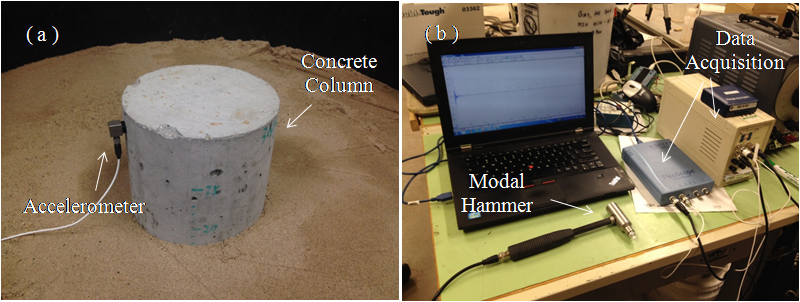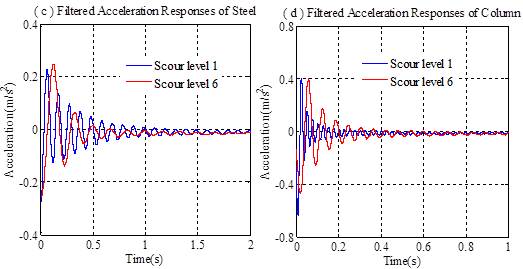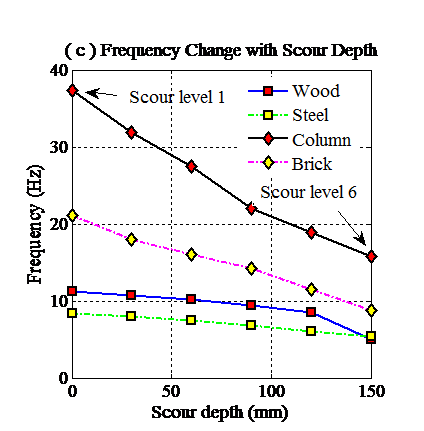Sustainability
LiuRG is concerned about the sustainability of infrastrure of the modern socienty from both the structural and material aspects. The following are two examples with pavements and cement-based materials.
Thermo-Hydro-Mechanical Simulations for Soil Freezing
Example 1: A few simulation models have been developed to predict the effects of climate conditions, i.e., the temperature and moisture distribution, on pavement performance (Shao, 1994; Bentz, 2000; Yavuzturk, 2002; Ariza, 2002). Most study only involves one or two field variables. The Enhanced Integrative Climate Model (EICM) was used in the Mechanistic-Empirical Pavement Design Guide software. It is however one-dimensional and does not account for the coupling effects of field variables.
This research was conducted in view of three major needs to advance freezing ground mechanics to serve pavement design in cold region, i.e., 1) The needs of a comprehensive theoretical framework of coupled thermo-hydro-mechanical process based on thermodynamics; 2) The needs to capture the essential processes involved in frost porous materials; 3) The needs to link the model simulations to the real in-service pavement.
The simulations are validated against data from an Ohio Instrumented Road with typical field data: air temperature, precipitation; initial and final temperature, material properties of different layers; monitored temperature and water content by sensors. The redistribution of temperature and moisture in pavement structures are as the following figures.

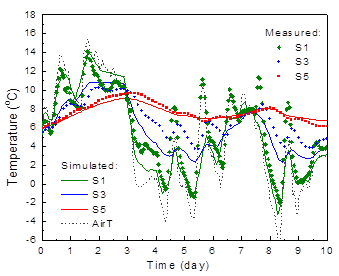
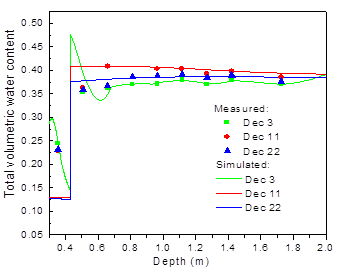
Example 2: Pipes under frost Loading.
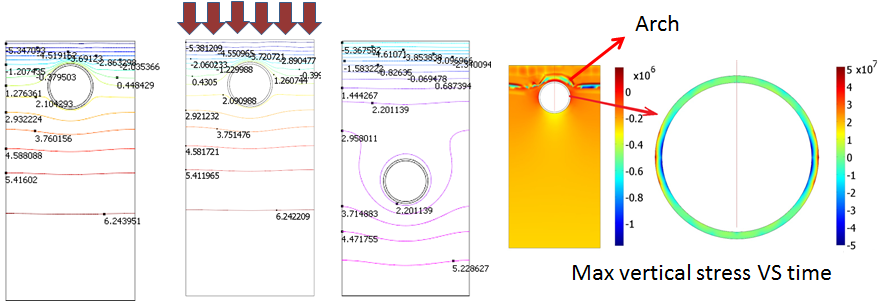
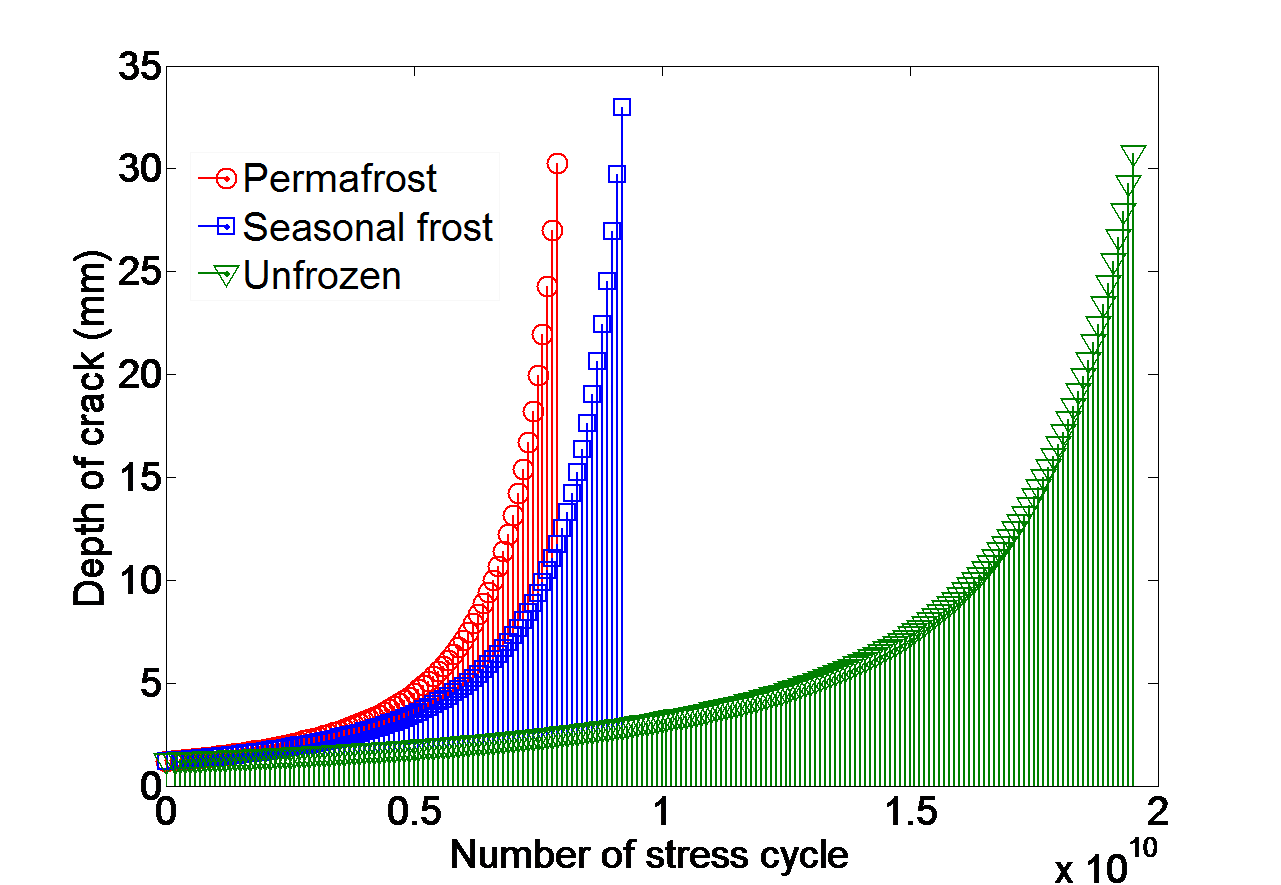
Thermo-Hydro-Mechanical-Chemical Simulations for Early Stage Cement Hydration
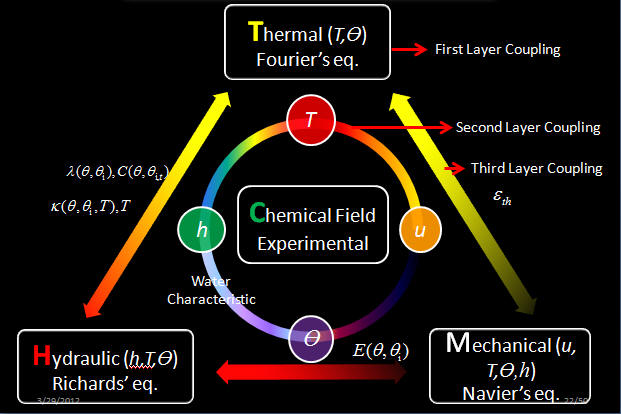
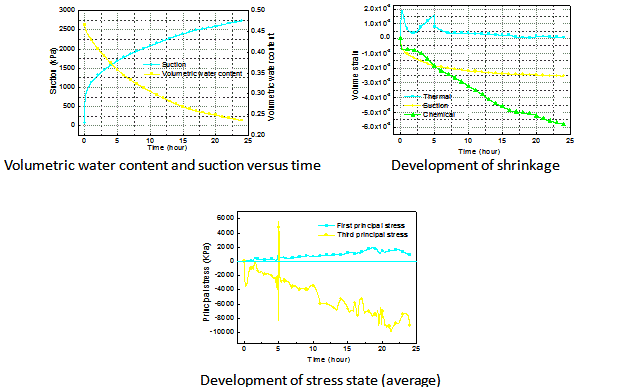
Frequency-Based Method for Bridge Scour Detection
Scour around bridge foundations is regarded as one of the predominant causes of bridge failures, which seriously threat the bridge safety and its service. The concept of vibration-based real-time bridge scour detection has been explored in recent years by investigating the change in the natural frequency spectrum of a bridge or a bridge component with respect to scour depth. The following figures show the results from both experiments and simulations conducted by LiuRG members.
